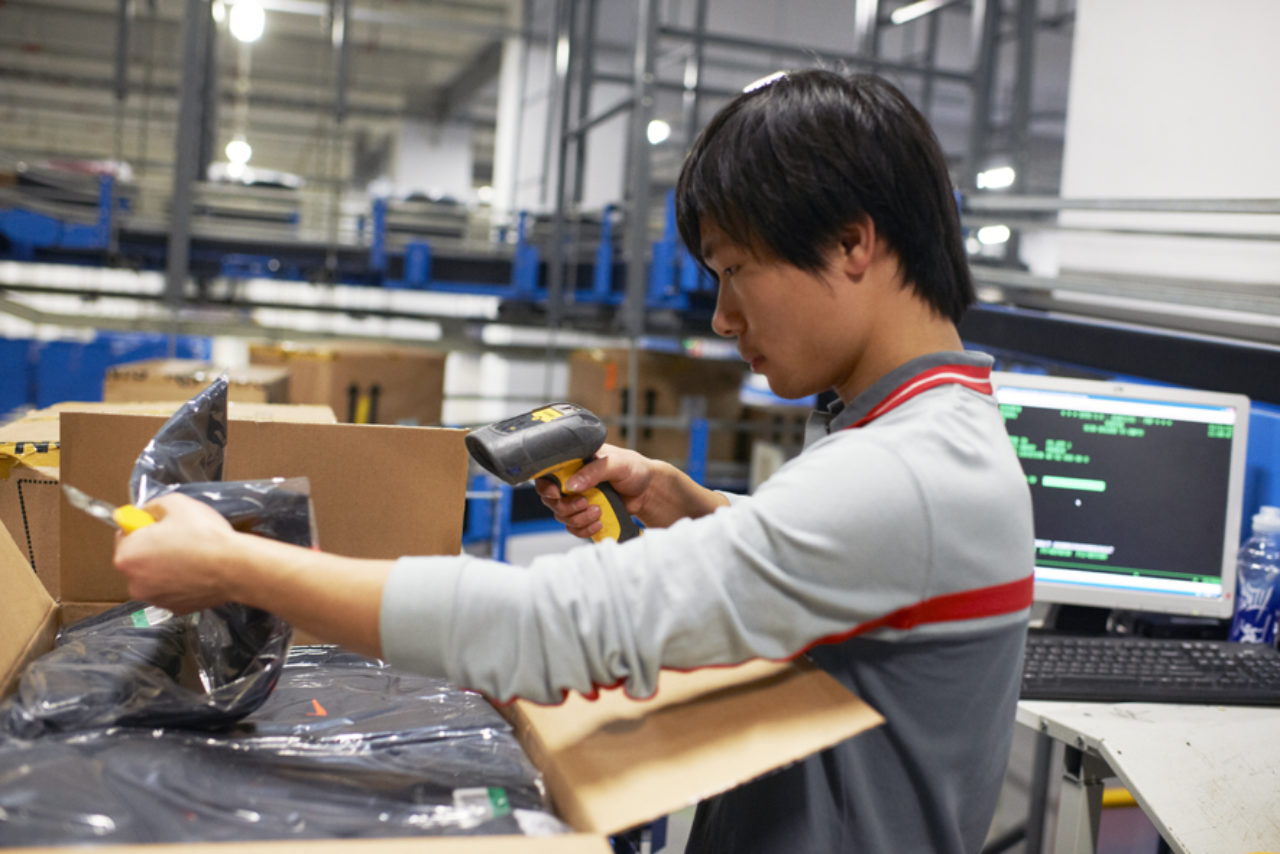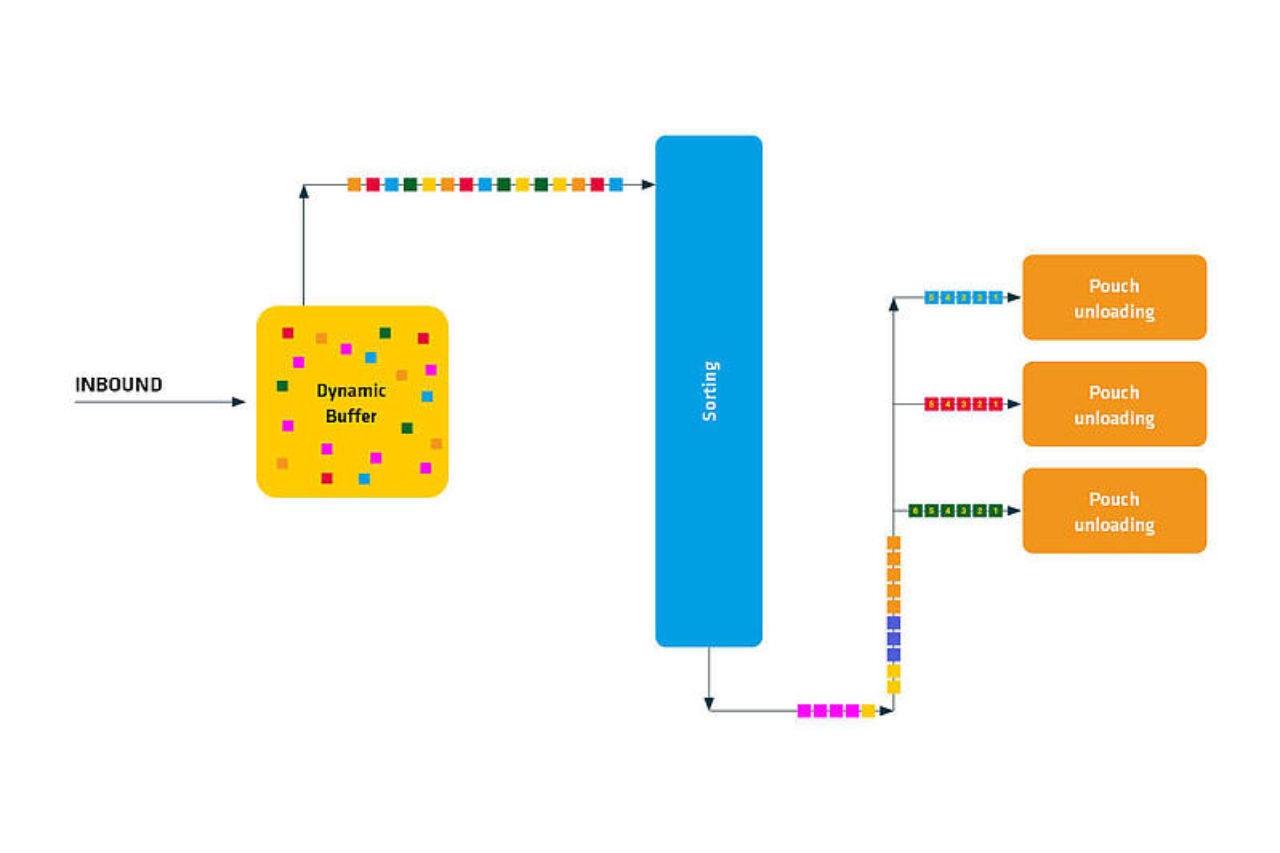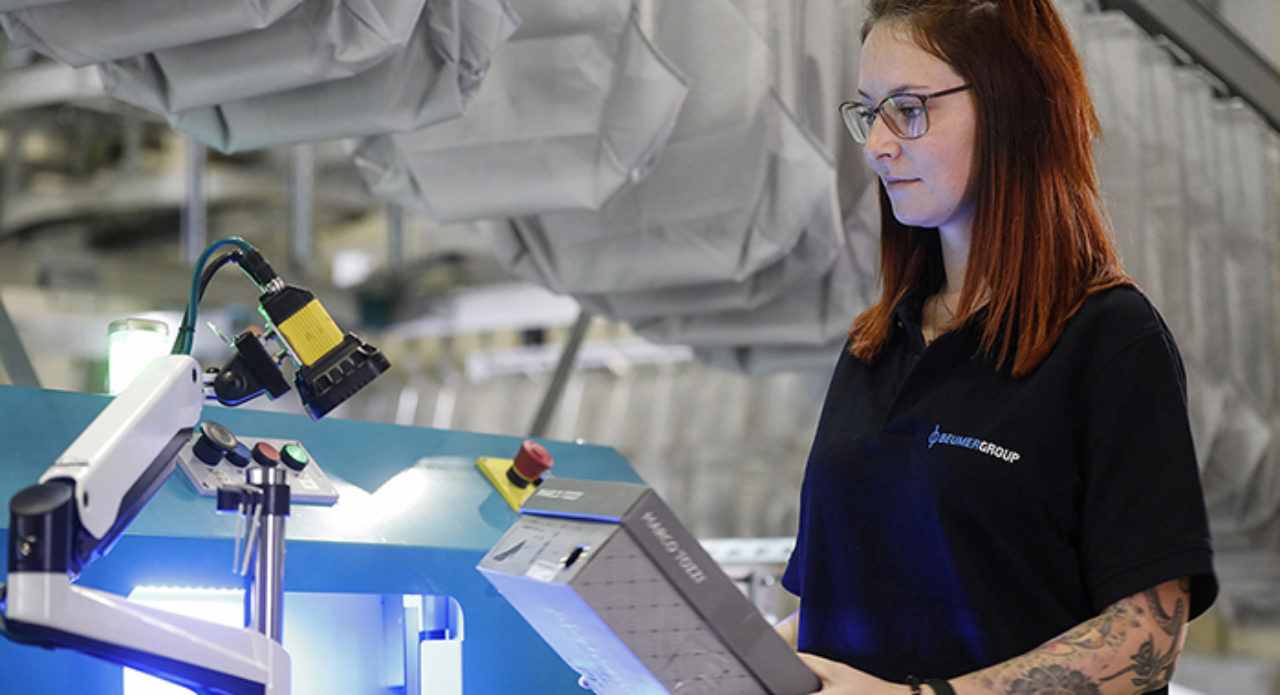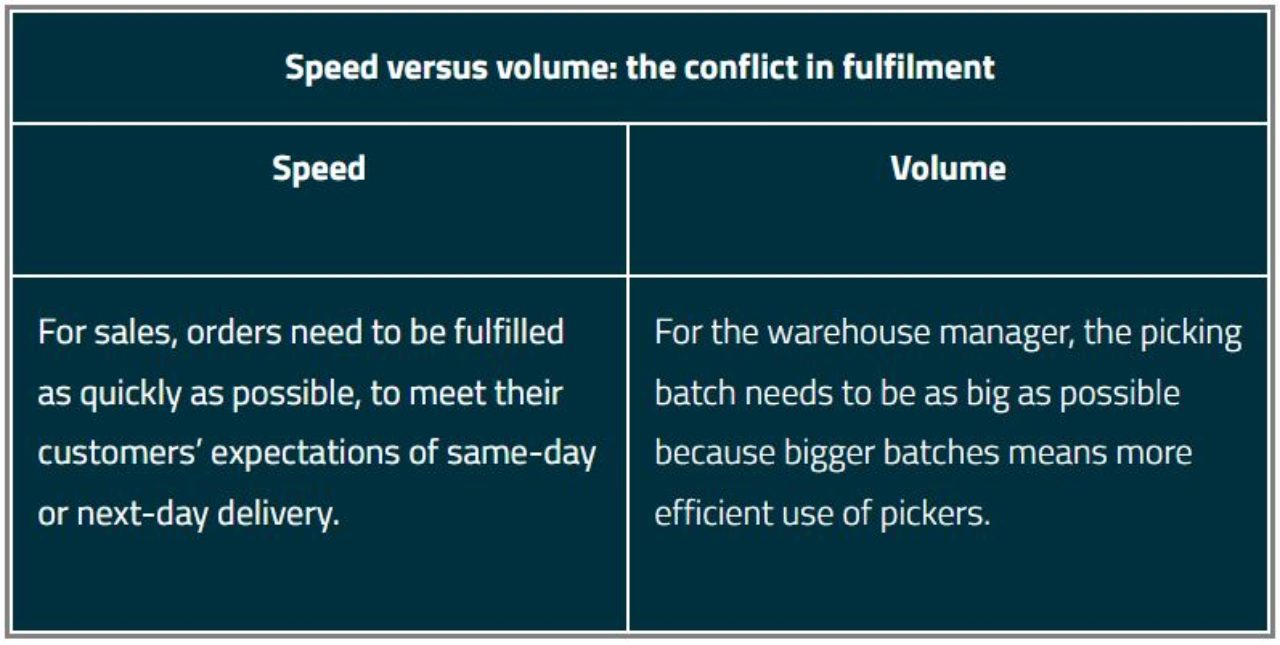Along comes batch picking
The easiest way of handling these small orders was through “batch creation” or “batching at picking”. The practice allows pickers to pick multiple items from multiple orders at the same time, so items from a single order can be split between a number of pickers. Each picker works in a specific area only, without the need to trace back and forth through the aisles to pick items later. The items from a single order are then consolidated during the sortation.
What’s new here is the way orders are picked in batches, and what happens before the sortation.
Batch picking can be applied to any kind of sorting technology, whether it’s manual put walls, cross-belt loop sorters or pouch system sortation. However, for put walls or loop sorters the batch size – or number of orders handled – is limited to the batch capacity of the sortation system while for pouch sorting the only limit is the number of items the buffer can hold.
2. The sorting batch
By comparison, the sorting batch is a feature inherent to pouch sorter technology and is completely different from the picking batch (for the reasons mentioned above).
That being said, we should emphasise here that the batch picking influences picking efficiency and how big the batch buffer needs to be designed (we’ll address this further below).
The batch buffer
In the pouch sorter system, the batch buffer (also known as a ‘dynamic batch buffer’) is named as such because it creates the sorting batch.
The items retrieved from picking are inducted to the sortation system where they are held in a batch buffer until all items have been gathered, one item per pouch. The circular batchlines typically hold two picking batches, each consisting of a mixture of orders. The system confirms that all items in the batch are present in the buffer where they stay until they are needed, before the items are then sent through the algorithm-based matrix sortation.
By placing the orders into the dynamic batch buffer first, they are ‘buffered up front’, contrary to, for example, a manual put wall-based batch building or a loop sortation process where orders are only built after the items are discharged into compartments inside the destination chutes. With the dynamic batch buffering process inherent to pouch technology, orders within a picking batch can also be prioritised, for example, according to cut-off times. And the space for the buffer is up in the air and not in compartments on the floor where it takes up space.
The matrix sortation
The pouch system’s matrix sortation – a feature not found in other sortation systems – then determines the sorting batch. The sortation uses the Radix algorithm, a sorting algorithm whose parameters are set by the pouch system supplier. For example, BEUMER Group’s algorithm sorts six lanes of items three times. In other words, 6x6x6 or a total of 216 items (or 216 pouches, as each item is placed in its own pouch) are sorted in one rotation batch.
There are three steps in the matrix sortation, which basically means that items come in no particular order and come out in perfect order.








